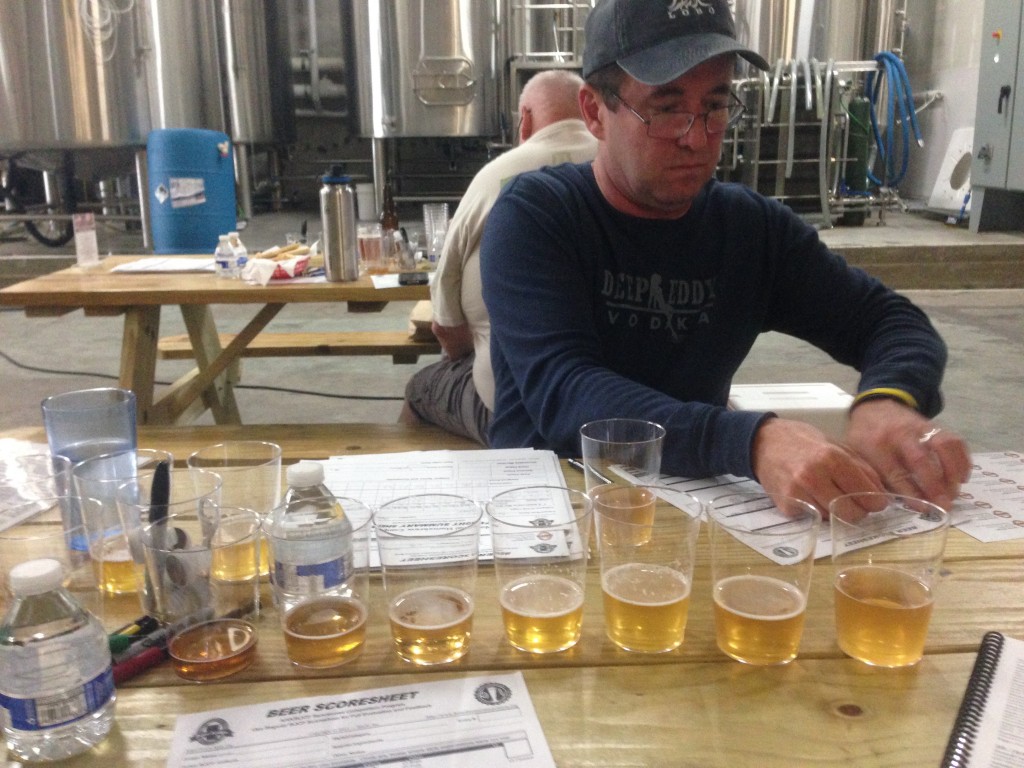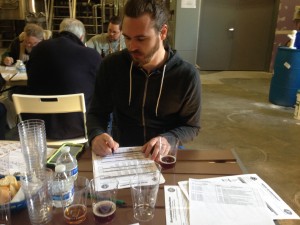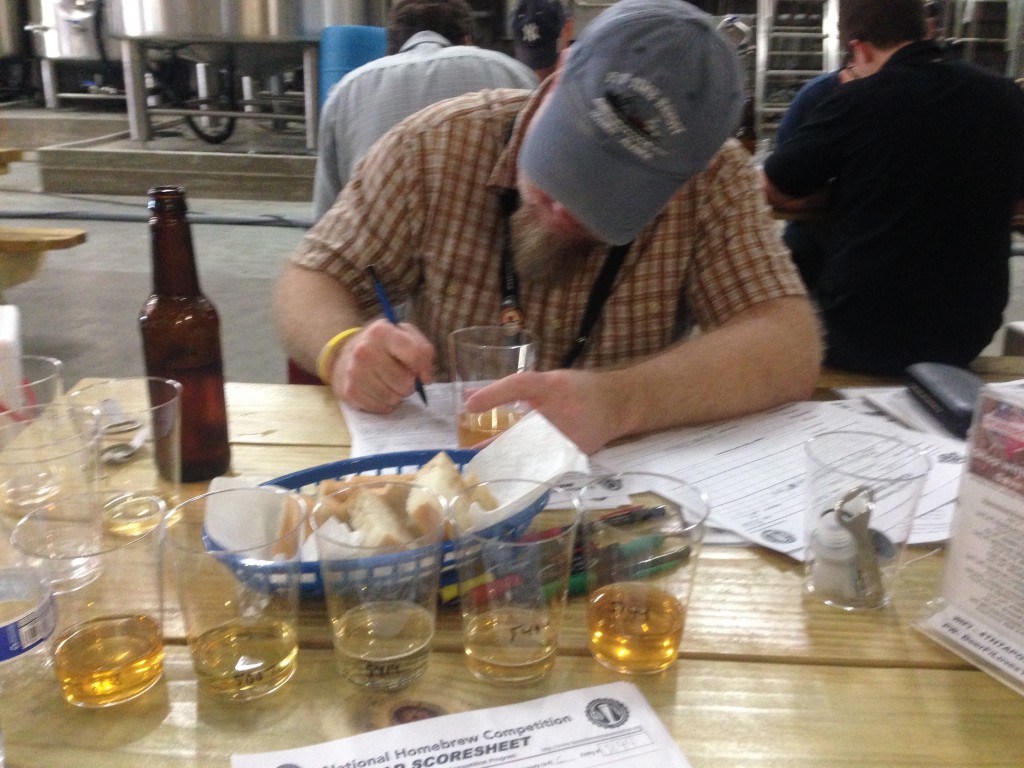On Friday and Saturday of last week, the Austin NHC site held its first round judging. I, along with many other Austin ZEALOTS and other Austin area homebrewers, descended upon 4th Tap Brewing and judged over 700 beers, finishing the task a day ahead of schedule.
Every year I judge, I try to think of the bigger picture afterwards and see if I can identify any trends or find anything worth writing about from the experience. Then I write about it anyway.
Judging at a large competition, you get to sample a lot of beers. This year, I judged 6 flights over the two days, ranging from 5 to 12 beers in a flight, with 7 or 8 being the median number (IIRC). Plus, there’s always the “holy crap, you have got to try this” moments when another judge finds a particularly spectacular beer and shares it. And of course, there’s the groans when judges encounter a real stinker. So, each judge gets to sample a fair amount of beer and gets some idea of what the other judges are encountering. On the other hand, one judge’s experience can’t be taken as a statistically valid sample, so these are just my observations.
One thing I noticed was a lot of entries with low carbonation. Many of the entries had no sediment on the bottom, indicating that the bottles were filled from a keg. A healthy percentage of these (and at least one bottle conditioned beer) were undercarbonated. I’m guessing that many of the undercarbonated beers were quick filled from the keg, not using a counter-pressure filler or “beer gun.”
Undercarbonated beers do not produce a nice foam stand. In addition, the intensity of the beer aroma is lessened because carbon dioxide bubbles aren’t pushing it out of the glass. Finally, a small amount of carbon dioxide in beer dissolves and becomes carbonic acid, which gives beer a bit of “liveliness” (due to a slight drop in beer pH). If you’re entering a homebrew contest, get your carbonation levels right. If you don’t you’re losing easy points and potentially making the good parts of your beer harder to detect.
I was shocked at the number of contaminated beers I encountered this year (both in my flights and from the descriptions of other judges). I encountered a number of beers that were so awful I couldn’t believe anyone would submit them to a contest. Afterwards I wondered if this might have been a problem at bottling. The brewer’s keg of beer might have been fine, but maybe he or she didn’t pay enough attention to sanitation while bottling.
Although there were some fantastic beers spread throughout the flights, there were also a lot of really drab beers, too. I encountered a number that didn’t have any glaring flaws, but virtually every aspect of them was slightly substandard. For example, the beer was slightly too hazy to be appealing, the foam was light and collapsed quickly, the beer didn’t smell and taste fresh, was slightly too sweet (from incomplete attenuation), and frequently tasted “flabby.”
Normally, I like to give brewers scoresheets that not only give them a score, but help them figure out any problems with their brewing. But for many of these beers, I had no idea what the problem was. There wasn’t a single variable would produce all these results. My only thought was that the brewer tried to cut multiple corners, and his or her beer suffered from it. (I know this won’t go over well in some quarters, but I also wondered which of these beers were made with brew-in-a-bag (BIAB) methods.)
It could be that I just drew more than the usual number of bad beers this year. I did taste some very good homebrews as well, but the numbers seemed to be down. In commercial brewing, many brewers and beer experts think the average quality of beers is declining. The best brewers are still making great beer, but much of the beer being made at start up breweries is substandard. Could the same thing be happening among homebrewers? To really find out, we’d need to see if multiple judges encountered the same thing as I did (and maybe if scores are in decline this year). More importantly, experienced homebrewers should reach out to younger brewers who may be floundering a bit and help them understand what separates good homebrew from bad.
I hate to dwell on the negative aspects of this year’s contest. I know how easy (and useless) it is to be Mister Curmudgeon, always complaining about things, but that was just what stuck with me this year. I did taste a few fantastic beers (so my palate wasn’t wrecked) and the contest itself ran very smoothly. As always, I learned something new from judging with experienced judges. And let’s face it, homebrew events are fun enough that even some bad homebrew can’t spoil them. So, congratulations to Neil Spake (Austin Competition Coordinator) and George Stuart West (Austin Judge Coordinator) for all their effort put into running a smooth competition. And, to everyone brewing substandard homebrew — get off my lawn! (Come inside and maybe I can help you with something.)
—
Related Article




Speak Your Mind